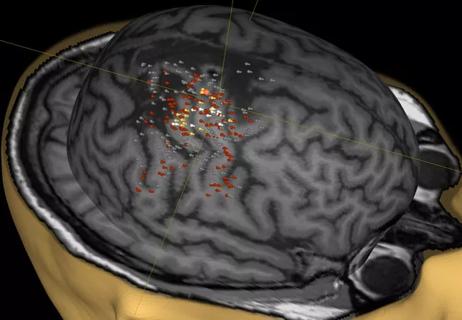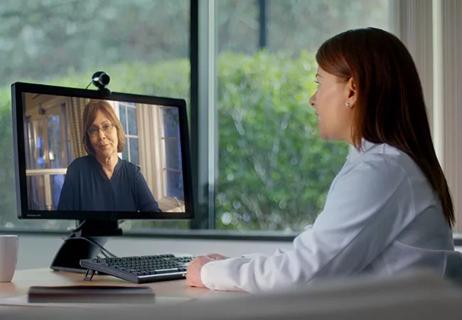Pilot program expedites patient transfers by removing precertification requirements

A collaborative pilot program between Cleveland Clinic and Anthem Blue Cross and Blue Shield is expediting patient admissions to inpatient rehabilitation facilities by bypassing precertification requirements for selected Medicare Advantage enrollees. Eligibility is determined with the Cleveland Clinic-developed 6 Clicks functional measurement tool, which enables quick and easy assessment of patients’ physical and functional status.
Cleveland Clinic is a non-profit academic medical center. Advertising on our site helps support our mission. We do not endorse non-Cleveland Clinic products or services. Policy
The program follows a similarly designed Cleveland Clinic pilot using 6 Clicks to expedite skilled nursing facility (SNF) transitions. That successful pilot, detailed in a previous Consult QD post, reduced overall length of hospital stay by 3 days. In addition, 6 Clicks identified patients who would have been approved for SNF transfer through the usual precertification process with 100 percent accuracy.
“Streamlining care transitions optimizes patient experience and hospital resource use,” says Frederick Frost, MD, Chair of Cleveland Clinic’s Department of Physical Medicine and Rehabilitation, who is leading the program. “6 Clicks is key to the process.”
Hospitalized patients who have been deemed medically ready for discharge but in need of intensive physical and occupational therapy before going home typically must wait while their insurance provider agrees that transfer to an inpatient rehabilitation facility (IRF) is the appropriate next step.
During this precertification period, which can last three to four days, the patient may be in “hospital limbo,” Dr. Frost explains, as they may no longer need medical care but are unable to start rehabilitative therapy. Anticipating this delay, hospitals may direct the patient home or to a SNF in order to control hospital length of stay. This tactic often backfires, however, as patients may get readmitted because they were placed at an inappropriate level of post-acute care.
Dr. Frost describes the precertification process as costly and cumbersome, involving “an army of doctors, nurses, hospital administrators and insurance company staff” spending time on the phone and processing paperwork.
“In my experience, about 90 percent of transfers from acute care to an IRF are slam dunks — both sides would agree to them,” he says. “6 Clicks has made it so that the healthcare team and administrators need not waste time over-evaluating this group but can instead rapidly get them to the care they need.”
A simple premise underlies the new transfer model, Dr. Frost explains: While the healthcare system excels at measuring burden of physical illness with a multitude of physiologic indicators like vital signs and lab tests, measuring a patient’s function is not as routine or standardized.
6 Clicks nicely fills that gap, he notes. The 6 Clicks tool, developed as a short form of the AM-PAC™ (Activity Measure for Post Acute Care™) instrument developed by Boston University researchers, has been validated and licensed to over 1,000 healthcare facilities across the U.S. It consists of a six-item assessment by a physical therapist (evaluating physical abilities ranging from turning over in bed to climbing stairs) and another by an occupational therapist (assessing self-care abilities). Each item is rated from 1 (total assistance needed) to 4 (patient can perform task independently). A specified threshold score qualifies a patient to bypass precertification.
“If you can’t measure something, you can’t manage it,” Dr. Frost observes. “Uniform data collection guides resource utilization and gives us the ability to intelligently and objectively make recommendations with individual patients and their families.”
Development of the new floor-to-IRF pilot program stemmed from the success of Cleveland Clinic’s earlier pilot program using 6 Clicks to waive precertification therapy visits for transition from the hospital to a SNF for appropriate patients. After results of that earlier pilot came in, use of the program rapidly expanded from Anthem to 10 other payors. Leveraging this experience, Cleveland Clinic became one of just a handful of health systems to receive a Centers for Medicare & Medicaid Services (CMS) waiver from the required three-day inpatient hospital stay prior to Medicare coverage of care at an affiliated SNF.
Although no such CMS requirement exists for transitions from an acute care hospital to an IRF, Dr. Frost notes that insurers are understandably leery of transfer without a precertification therapy visit. An IRF stay tends to be resource-intensive, often making it much costlier than SNF care in the short run. Payors are reluctant to approve transfer without good evidence of patient need.
Dr. Frost anticipates that this pilot program, which is expected to last about six months, will prove beneficial for patients and payors and then become standard of care at Cleveland Clinic, with eventual expansion to other insurers.
Dr. Frost credits regional leaders at Anthem and Cleveland Clinic for bringing about these pioneering agreements. He identifies several essential ingredients for success: hard data, strong organizational commitment from both parties, and communication within the health system by thorough integration into the electronic medical record, as hospital staff must be brought on board to adopt the new program.
“In healthcare, change is hard,” Dr. Frost reflects. “Rarely do we have a situation like this where a new program is incredibly advantageous to the hospital, the payors and the patients. Everyone recognizes that this can be a huge win for all.”

A noninvasive approach to map eloquent areas before surgery

Physician reimbursement policy experts join forces with IT and coders to enable digital transformation

Minority Stroke Program focuses on outreach to racial and ethnic minority communities

Excellent response seen with ongoing use in patients as young as 11

Q&A with a psychiatrist in Cleveland Clinic’s Transgender Surgery and Medicine Program

Time constraints, language barriers, substance misuse, mood disorders targeted for improvements

Project draws $1.6M to leverage telemedicine to create medical home, ease transition to adult care

Comorbid depression is only one of the likely warning signs